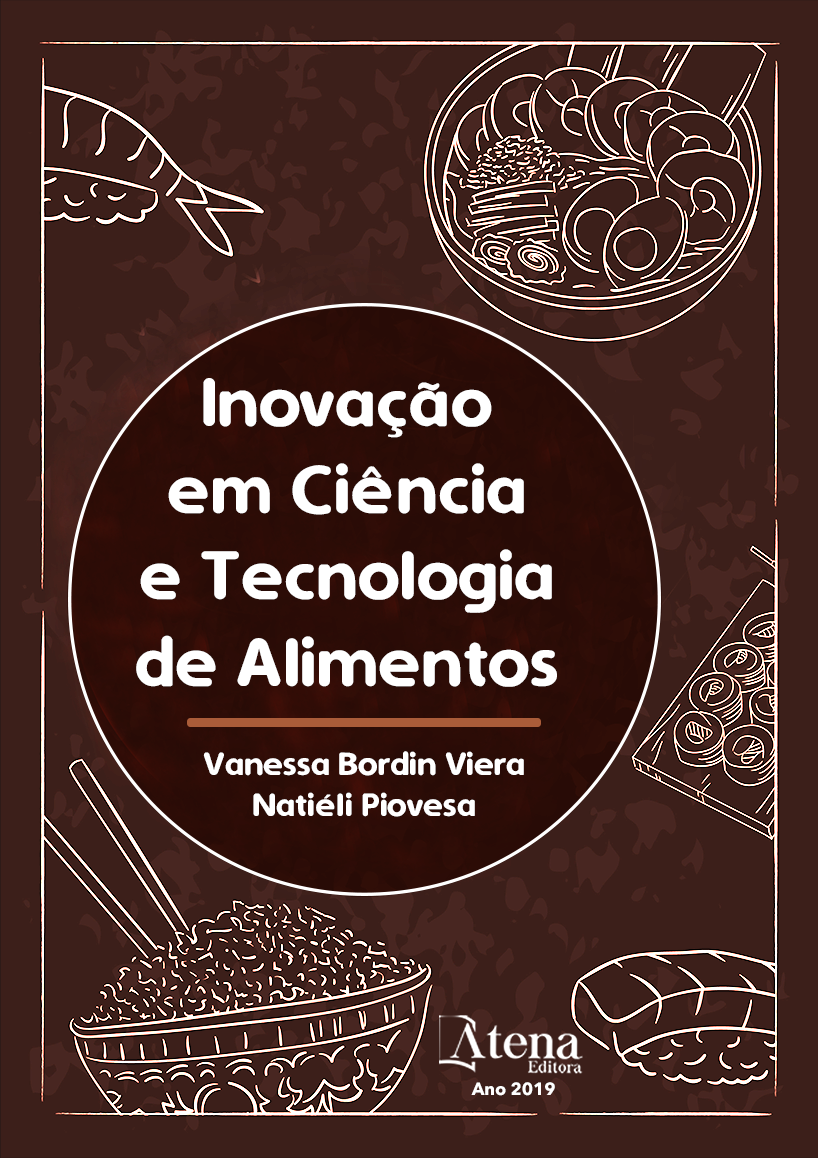
INIBIÇÃO DO CRESCIMENTO DE SALMONELLA SPP. E ESCHERICHIA COLI EM UVAS PÓS-COLHEITA ATRAVÉS DO USO DE COBERTURA COMESTÍVEL DE NANOPARTÍCULAS DE QUITOSANA FÚNGICA
A presente pesquisa tem como
objetivo avaliar a atividade antimicrobiana de
cobertura comestível a base de nanopartículas
de quitosana aplicada em uvas. A atividade
antimicrobiana foi realizada in vitro contra
bactérias patogênicas de origem alimentar
e foi feita a comparação dos resultados do
gel, nanopartículas e gel enriquecido com
nanopartículas. As nanopartículas produzidas
foram dispersas nas concentrações CIM/2,
CIM e 2CIM no gel de quitosana para formação
de cobertura comestível para o controle de
Salmonella spp. e E.coli em uvas pós-colheita.
Os resultados mostraram que as nanopartículas
de quitosana apresentaram uma melhor
atividade antimicrobiana comparada com o gel
de quitosana. As nanopartículas diluídas no
gel, apresentaram-se mais bem dispersas e
capazes de formar uma cobertura comestível
em uvas. Com aumento da concentração das
nanopartículas na cobertura, foi observado
diminuição na contagem de E.coli e Salmonella
spp. Os resultados encontrados sugerem que as
nanopartículas de quitosana podem ser usadas
para melhorar a segurança microbiológica de
uvas pós-colheita.
INIBIÇÃO DO CRESCIMENTO DE SALMONELLA SPP. E ESCHERICHIA COLI EM UVAS PÓS-COLHEITA ATRAVÉS DO USO DE COBERTURA COMESTÍVEL DE NANOPARTÍCULAS DE QUITOSANA FÚNGICA
-
DOI: 10.22533/at.ed.00019091020
-
Palavras-chave: Frutas. Bactérias. Biopolímero. Nanotecnologia.
-
Keywords: Fruits. Bacteria. Biopolymer. Nanotechnology
-
Abstract:
The aim of the study was to evaluate the antimicrobial activity of fungal
chitosan nanoparticles edible coating applied to grapes. Antimicrobial activity was
performed in vitro against foodborne pathogenic bacteria and the results of gel,
nanoparticles and gel enriched with nanoparticles were compared. The nanoparticles
were dispersed at concentrations MIC / 2, MIC and 2MIC in the chitosan gel for edible
coating formation to control Salmonella spp. and E.coli in postharvest grapes. The results
showed that chitosan nanoparticles showed a better antimicrobial activity compared to
chitosan gel. The nanoparticles diluted in the gel were better dispersed and capable
of forming an edible coating. With increasing the concentration of nanoparticles in the
coating, a decrease in the growth of E.coli and Salmonella spp. was observed. The
results suggest that chitosan nanoparticles can be used to improve the microbiological
safety of postharvest grapes.
-
Número de páginas: 15
- José Henrique da Costa Tavares Filho
- Fernanda Luizy Aguiar da Silva
- Miguel Angel Pelágio Flores
- André Galembeck
- Tânia Lúcia Montenegro Stamford
- Thatiana Montenegro Stamford-Arnaud
- Thayza Christina Montenegro Stamford
- Natália Ferrão Castelo Branco Melo


